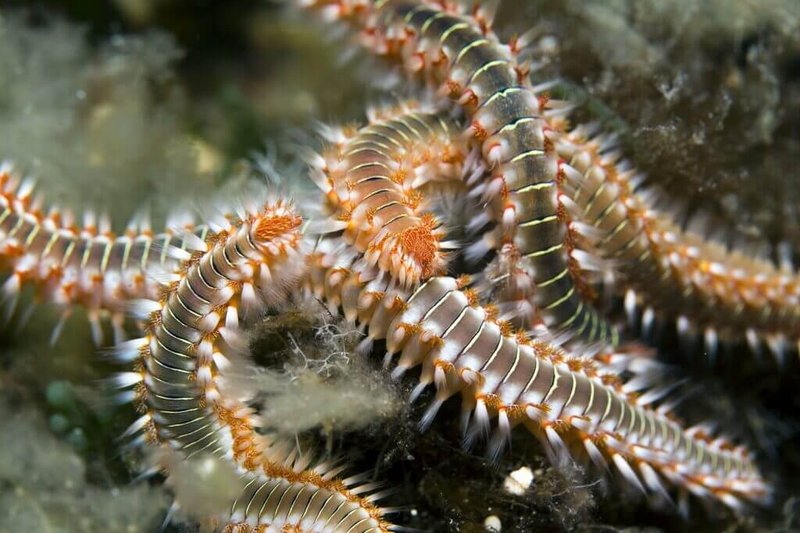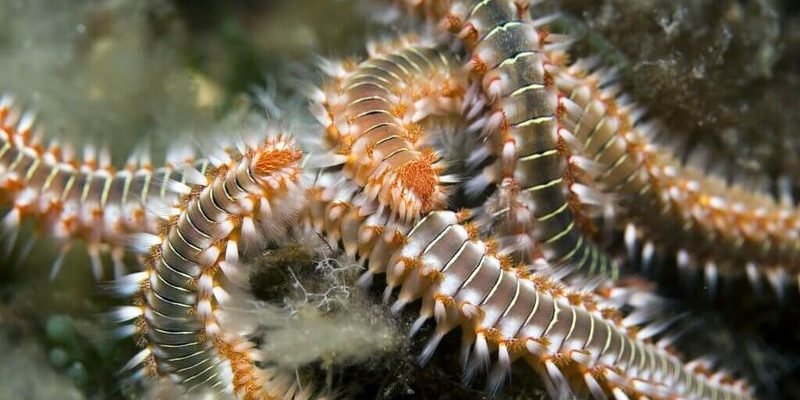
Let’s dive into the world of bristle worms and explore whether these little creatures are harmful. Think of this as a casual conversation over coffee, where we peel back the layers on these fascinating organisms. By the end, you’ll have a clearer picture of who bristle worms are, how they live, and whether you need to worry about them during your beach outings.
What Exactly Are Bristle Worms?
Bristle worms belong to the class Polychaeta, which is part of the annelid phylum. They’re often found in marine environments, lurking in oceanic depths, tidal pools, or even aquariums. With over 10,000 species, their appearance can vary quite a bit. They usually have long, segmented bodies covered in hair-like bristles called *setae*, which give them their name.
These worms can range from a few inches to over three feet long, depending on the species. While they might not win any beauty contests, their unique bodies and colors make them interesting. You might find them hiding in coral reefs, under rocks, or burrowed deep in the sand.
Bristle worms are primarily scavengers, feeding on detritus and decaying organic material. They play a crucial role in the ecosystem, breaking down waste and recycling nutrients. Basically, they’re the clean-up crew of the ocean!
Are Bristle Worms Dangerous to Humans?
You might be surprised to learn that, in most cases, bristle worms aren’t dangerous to humans. However, they do have a few tricks up their sleeves that can cause discomfort. Some species possess venomous bristles that can sting if they come into contact with skin, leading to irritation and rashes.
If you’ve ever accidentally brushed against a bristle worm while wading in the water, you might feel a burning sensation. This is because their bristles can detach and become embedded in your skin, similar to how a fiberglass splinter feels. Not exactly a pleasant experience!
To minimize the risk of stings, it’s best to admire these creatures from a distance and avoid handling them. Here’s a quick tip: if you do get stung, wash the area with soap and water and apply a cold compress to ease the pain. Most symptoms should subside within a few hours.
Common Myths About Bristle Worms
There are plenty of myths surrounding bristle worms that can lead to unnecessary fear. For example, some people believe that all bristle worms are lethal or that they can actively seek out humans to attack. Let’s clear this up.
– **Myth 1:** All bristle worms are venomous. → This isn’t true. Only certain species have potent bristles, and those are mostly harmless unless provoked.
– **Myth 2:** They live to sting humans. → Bristle worms are not aggressive. They won’t seek you out, and they’d rather hide than confront you. They only sting when they feel threatened.
Understanding these myths helps reduce fear and fosters respect for these unique creatures. They have their place in the ecosystem and are vital for marine health.
The Role of Bristle Worms in the Ecosystem
Bristle worms are more than just interesting marine life; they are critical to their ecosystems. As scavengers, they consume organic matter and recycle it back into the environment. This process helps maintain the balance within marine habitats, ensuring that nutrients are available for other organisms.
Moreover, they serve as food for various predators, including fish, sea turtles, and even some birds. Without bristle worms, there could be a ripple effect on the food chain, affecting the overall health of marine ecosystems.
So, the next time you see a bristle worm, remember that it plays a vital role in keeping the ocean clean and supporting other life forms. Respecting these creatures can help preserve the delicate balance of their underwater world.
How to Avoid Bristle Worm Stings
If you’re planning a beach day and want to avoid any unpleasant run-ins with bristle worms, here are some simple tips:
- Wear sturdy shoes when wading in rocky areas or tidal pools.
- Avoid touching any small, squirming creatures you encounter.
- Stay aware of your surroundings when swimming near reefs.
- Use gloves when handling marine materials or cleaning out aquariums.
By taking these precautions, you can minimize your chances of a sting while enjoying the beauty of the ocean. It’s all about respecting the environment and keeping yourself safe!
In summary, bristle worms aren’t out to harm you, but they can deliver an unpleasant sting if provoked. By understanding their role in the ecosystem and taking a few precautions, you can safely appreciate these fascinating creatures.
Next time you’re at the beach or exploring tide pools, keep your eyes peeled for these unique worms. Remember, they’re not just squiggly nuisances; they contribute to the health of our oceans. So, let’s embrace the mystery of bristle worms and appreciate the quirks of marine life!

